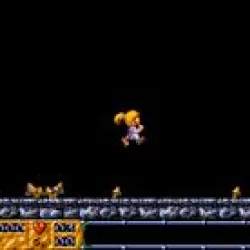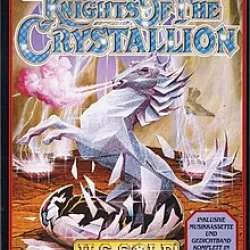Games like Cytron
Find more than 12 similar video games like Cytron
Cytron similar games:
2
Plot: Amnios is a 1991 video game for the Amiga platform. It is a top-down multi-directional-scrolling shoot 'em up, set on ten planets across ten levels. Wikipedia
3
Plot: Cardiaxx is a science-fiction scrolling shooter video game for the Commodore Amiga. It was developed by Eclipse Design and published by Electronic Zoo in 1991, although it was originally published by Electronic Zoo. The game features a spaceship as it flies through various levels of varying graphic...
4
Plot: Crazy Sue Goes On, also known as Crazy Sue 2 and Crazy Sue II, is a 2D platform game for the Amiga which is the sequel to Crazy Sue, in which the player again takes the role of the little girl named Crazy Sue, and must defeat the wife of the evil Wizard of Doom whom she defeated in the first game....
5
Plot: Styx: Master of Shadows is a stealth video game developed by Cyanide Studios for Microsoft Windows, PlayStation 4 and Xbox One. The game is a prequel, and the second video game to take place in the world established by 2012's Of Orcs and Men. Wikipedia
6
Plot: Matrix Marauders is a 1990 racing video game. According to Psyclapse, it is a superfast 3D abstract computer racing game. Wikipedia
8
Plot: Terrorpods is a 1987 shooting game with simple business simulation by Psygnosis. Originally developed for the Amiga and Atari ST, it was later ported to the Commodore 64, ZX Spectrum, Amstrad CPC and MSX. Wikipedia
9
Plot: Aunt Arctic Adventure was released in 1988 by Mindware, as an Amiga game. Wikipedia
11
Plot: Bill's Tomato Game is a puzzle game for the and Amiga designed by Bill Pullan and published by Psygnosis in 1992. The artwork is by Lee Carus-Westcott and the music by Mike Clarke. A planned Sega Mega Drive port was cancelled, but a prototype cart exists and was released online in 2014. Wikipedia
12
Plot: Knights of the Crystallion is a 1990 computer game for the Amiga developed by Bill Williams and published by U.S. Gold. A fantasy-themed adventure game comprising a mix of sub-games with a puzzle element, the game made extensive use of the Amiga computer's Hold-And-Modify graphics mode. Wikipedia












